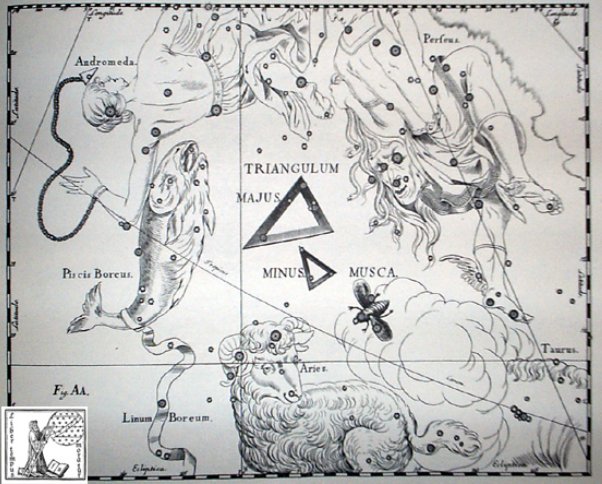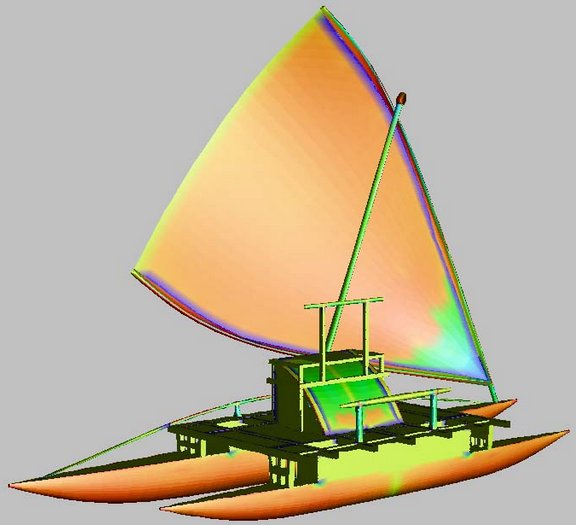As if by design the G tablet was given to Western Civilization 288 years after 1582, after the birth of the Gregorian calendar. ... The officers of the Chilean corvette O'Higgins received this tablet and the Large Santiago Tablet from Father Roussel on Rapa Nui in 1870 ... And as if by design the creators of Manuscript E had put the arrival of their Sun King in day 288 - corresponding to the day in 1582 A.D. when the Pope had presented his new calenar - but not day 288 at the time of rongorongo but rather day 288 at the time of Bharani (41 Arietis in Musca Borealis):
... The canoes of Ava Rei Pua and of Hotu were seen near the (off-shore) islets. On the fifteenth day of the month of October (tangaroa uri) the canoe of Hotu and the canoe of Ava Rei Pua landed ...
There were 329 (November 25) - 288 = 41 days before the Sun de facto reached Antares, because precession had moved the stars ahead with 41 days equal to the right ascension position of Bharani. Or counting with Ga7-24 (where 72 * 4 = 288) as the day for the arrival, the distance could be 337 - 288 = 49 (= 7 * 7) nights. *49 + 365 = *414 (= 14 * 29½ + ½) or May 9 (129). The creators of Manuscript E may well have told about this 8 day time difference: ... The two hulls were no longer kept lashed together (i.e., they were separated for the rest of the journey). Hotu called out to the canoe of the queen: 'Steer the canoe to the left side when you sail in. Teke will jump over on board (your) canoe to work his mana when you sail through the fishing grounds!' Teke jumped on board the second canoe, (that) of the queen. The king's canoe sailed to the right, the queen's to the left. Honga worked his mana in the fishing grounds. (List of five fishing grounds that belong to Hotu and Honga.) Teke worked his mana in the fishing grounds to the left side. (List of nine fishing grounds that belong to Hotu and Teke.) The men on board the royal canoe looked out from Varinga Te Toremo (the northeastern cape of the Poike peninsula). Then they saw the canoe of the queen, the canoe of Ava Rei Pua, as it reached Papa Te Kena (on the northern shore, east of Hanga Oteo). Honga came and gazed in the direction below (i.e., toward the west). He called out to the noteworthy ruler (? ariki motongi) Hotu: 'There is the canoe of the queen! It will be the first one to land!' At this news King Hotu replied to Honga, 'Recite (rutu) ('powerful incantations') as though the ten brothers of the chief (ariki maahu) were one whole (?).' The ten recited with all their might. This is what they recited: 'Let all movement (? konekone) cease!' They recited and sailed on swiftly: Honga, Te Kena, Nuku Kehu, Nga Vavai, Oti, Tive (corrected for 'Sive'), Ngehu, Hatu, Tuki, and Pu (corrected for 'Bu'). He worked mana in the fishing grounds. (Naming of two fishing grounds.) When Hotu's canoe had reached Taharoa, the vaginal fluid (of Hotu's pregnant wife) appeared. They sailed towards Hanga Hoonu, where the mucus (kovare seems to refer to the amniotic sac in this case) appeared. They sailed on and came to Rangi Meamea, where the amniotic fluid ran out and the conctractions began. They anchored the canoe in the front part of the bay, in Hanga Rau. The canoe of Ava Rei Pua also arrived and anchoraged. After Hotu's canoe had anchoraged, the child of Vakai and Hotu appeared. It was Tuu Maheke, son of Hotu, a boy. After the canoe of Ava Rei Pua had also arrived and anchoraged, the child of Ava Rei Pua was born. It was a girl named Ava Rei Pua Poki ... In order to understand this mystery we could first notice that glyph number 41 was where Sirius rose with the Sun at the time of Gregory XIII, viz. in ºJune 30 when the Full Moon was at Nunki:
... This [σ] has been identified with Nunki of the Euphratean Tablet of the Thirty Stars, the Star of the Proclamation of the Sea, this Sea being the quarter occupied by Aquarius, Capricornus, Delphinus, Pisces, and Pisces Australis. It is the same space in the sky that Aratos designated as Water ...
By counting 8 days ahead we will then reach day 41 + 8 = 49, i.e. 7 weeks from the time when Hyadum II in Taurus rose heliacally at 0h:
Accordingly the Explorers could have reached Easter Island at heliacal Castor. Manuscript E (p. 17): ... The Explorers left Hiva in the 25th day of the first month (Vaitu Nui) and arrived in Maro 1. Probably these dates referred to the time when Bharani was at 0h, and then "April 25 would have been when the Sun reached Cursa (β Eridani) and "June 1 where Castor rose with the Sun:
From Ga2-11 (41) to 185 (Ga7-16) there were 144 glyphs = 144 right ascension days:
Day 181 (heliacal Sirius in ºJune 30) + 107 = 288 (heliacal Antares in "October 288), because Sirius had stood still at this place, whereas Antares had moved ahead due to the precession. SEPTEMBER 22 (265) + 23 (precessional days from the time of Hyadum II to the time of Bharani; 64 - 41 = 23) = "October 15 (288). 107 can therefore be explained also as 23 + 84, where 84 was the day number for the Julian spring equinx.
|
||||||||||||||||||||||||||||||||||||||||||||||||||||||||||||||||||||||||||||||||||||||||||||||||||||||||||||||||||||||||||||||||||||||||||||||||||||||||||||||||||||||||||||||||||||||||||||||||||||||||||||||||||||||||||||||||||||||||||||||||||||||||||||||||||||||||||||||||||||||||||||||||||||||||||||||||||||||||||||||||||||||||||||

















